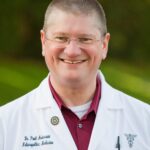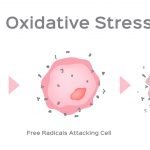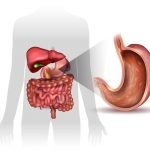Biofilms: What Have We Learned from the Research?
Paul S. Anderson, NMD
Docere
The medical relevance of biofilms in human illness is better understood now than ever before. A simple PubMed search using the terms “biofilm” and “human” yields 14 417 publications – an indication of the breadth and depth of research on the potential effects of biofilms on human health and disease. Although the subject of biofilms’ impact on disease has been in the medical literature for quite some time, 2 significant limitations exist which often impede clinicians’ understanding of not only their effect on disease progression and resistance but also their complexity. One is a lack of synthesis (at the patient-care level) of the numerous publications; the other is the lack of a broader understanding of how to clinically incorporate this information for best patient outcomes.
Biofilms – A Review
A quick review of what biofilms are and how they act and interact with their host is appropriate. Many, if not most, microorganisms form and persist in cohesive community structures termed biofilms. The cells composing biofilms secrete a gelatinous intracellular substance consisting of an extracellular polysaccharide (sugar), DNA, and protein matrix. Biofilms are often found attached to living and inert stable surfaces that have a constant liquid flow that serves to bring nutrients and remove waste products. Rather than being composed of a single organism, biofilms contain 2 or more organisms; this contributes to the biological stability, characteristics, and behavior of the resulting biofilm.
Organisms found within biofilms have distinct genetic expression and functional behavior compared to individual organisms subsisting in an individual planktonic state. The establishment and life cycle of biofilms on surfaces typically proceed through 4 main stages: Initial Attachment, Irreversible Attachment, Various Maturation Phases, and Active Dispersion or Blebbing/Fragmenting. Many microorganisms spend most of their life cycle in a persistent biofilm state, switching to free living or planktonic phases only during brief periods when environmental conditions are favorable.1 A biofilm can form almost anywhere that water is present, including the human gut, the bloodstream, on teeth (the sticky coating on not-yet brushed teeth is biofilm), all mucosal surfaces, and other locations.
In nature, biofilms are considered the rule rather than the exception. Thus, the presence of a biofilm is not necessarily pathogenic or even unusual. If this is the case, then what is important? Two main factors determine the potential for a biofilm to be pathogenic: 1) the stage of development of the biofilm; and 2) the health (or lack thereof) of the host patient. As an example, biofilms are often an underlying cause and impediment to cure in a person with a chronic infection. The degree of pathogenicity is affected by the variety of “stages” of a biofilm when interacting with the host. Biofilms are generally a group of living organisms that have a protective matrix of metallo-mineral and organic molecule coating. This complex protects the organisms from anti-infective therapies, allowing them to create a “super-biotic” organism colony. In most cases, the biofilm matrix is able to protect the organism colony from even the highest and strongest doses of antibiotic or other anti-infective drugs.
I have commonly seen clinically relevant biofilm activity in the following individuals:
- Those with positive lab titers that won’t clear with standard-of-care treatment
- Those who clear 1 infection, only to acquire another one or more
- Those with chronic gastrointestinal infections that are unresponsive to treatment
- Any chronically ill person
Stages of Biofilms
The “stage” of biofilms can typically be assessed based on the length of a patient’s illness, as well as the depth and complications of their illness. Identifying the likely stage of a biofilms can then help one decide which type of treatment or preventive strategy to employ. Consistent with convention, I will use the term “Phase-1” biofilms for those in earlier stages of development that are less significantly pathogenic (at times even considered normal), and I will use the term “Phase-2” biofilms for those that are in later and more complex stages of development and which are universally pathogenic and impediments to cure. I will relate Phase-1 and 2 biofilms to both cause and appropriate treatment in the sections that follow.
Phase-1 Biofilms
In Phase-1 biofilm formation (which includes the potentially non-pathogenic forms that we all have), the organisms are quorum sensing, which means they engage in cell signaling with auto-inducers that determine gene expression, virulence, resistance, and the development of biofilms. This coincides with the initial attachment of the biofilm colonies. Much of the mechanistic formation is due to the use of organism efflux pumps and multi-drug resistance pumps.
While Phase-1 biofilms may not be pathogenic, they are normally kept in a weakened state by preventive agents commonly found in healthy diets around the world (which is why they are often not a health issue in healthy people). These common preventive agents include many herbs and spices (which contain tannins, phenolics, flavonoids, aromatics, and the like2) as well as enzymes.3 It is when the host becomes depleted, the diet is insufficient for prevention, and/or a microbe or microbes are introduced into the system that an individual develops Phase-1 biofilms that adversely affect health. Other agents that have been studied in these types of biofilms include xylitol,4 stevia,5 and black cumin.6
Phase-2 Biofilms
A Phase-2 biofilm is one that has progressed through the steps of development described above, has multiple organisms in its sphere of protection, and is stronger from a mechanistic point of view. These biofilms are involved in more difficult-to-treat pathologies and/or in patients with longer-term or more complex illnesses.7-12 Unlike a Phase-1 biofilm, these more advanced biofilms are beyond the “prevention” point and are always pathogenic. They require direct disruption by agents that can change their structure in a way that allows the immune system and antimicrobial agents to gain access to the organisms contained within.13-15 Agents with the ability to disrupt more advanced biofilms include black cumin,6 silver nanoparticles,16,17 ethylene diamine tetra-acetate (EDTA)18 and bismuth.19
A more recently studied biofilm disruptor involves the creation of a “super molecule” by combining a form of bismuth and a thiol molecule. This combination molecule has been shown to be one of the most effective disruptors of Phase-2 biofilms. Bismuth-thiol (BT) development has been in process for decades but has only recently been advanced in the pharmacologic world as a result of increasing microbial resistance and related factors. Drugs based on the BT model will become standard in the infectious disease pharmacopeia as approved trials conclude in the near future. Current prescription BT agents can be made by compounding pharmacies. The references included with this article13-15,20-24 are just a sampling of the abundant research into the use of BT-type compounds for advanced (Phase-2) biofilms, drug-resistant infections, and the like. For those who are interested, Medscape has also published an excellent (and easier to digest) review.20 One factor highlighted in this review is the superiority of BT compounds over either bismuth or thiol alone.
In either type of manufacture (prescription or an over-the-counter supplement) this BT class of compounds can raise questions among healthcare providers (see Table 1). First, it is important to recognize that BT is neither bismuth nor thiol. It is the combination of the 2 that is pharmacologically critical for both their activity and safety.
Phase-2 Biofilms: Clinical Tips
Treating with a Phase-2 (BT) biofilm agent like this can require 8-12 weeks or a year, depending on the depth of biofilm development. It is usually a good idea to rotate the biofilm agent 4 days on and 3 days off, although some practitioners dose it daily until they see a response. In adults, the BT can be ramped up from the 1-per-day test dose to 4 per day. It should be taken away from food and supplements (by at least 1 hour) and accompanied by a full glass of water; if this causes stomach upset, then a veggie snack along with the water is fine.
Generally, immune aggravation is a sign that the biofilm is opening. At that point, the addition of more anti-infective agents to the protocol will be required for a period of time. In advanced cases, adrenal support will also be required during the immune flare.
The most important aspect of patient education is that a reaction is not “bad”; rather, the patient’s immune system is “seeing” infectious material that was previously hidden from it. A reaction does require a response. This can be additional anti-infective therapies, reassessment of adrenal and other endocrine function, slowing the treatment protocol, or whatever fits the individual case. Patients who have been suppressed and sick for a long time (and therefore “don’t react to any treatment”) may be taken by surprise when they do start to have an immune response; therefore, effective education and management is crucial.
Table 1. Phase-2 BT-type Biofilm Support: FAQs
|
Q. Isn’t bismuth toxic? A. Not in this form, as BT is neither bismuth nor thiol. The purpose of mixing a reactive form of bismuth with thiol(s) is to create a new molecule. The new molecule is what disrupts the biofilm. |
|
Q. Won’t it chelate my patient? A. Not for the most part. Since the thiol is bound to the bismuth, the toxicity of bismuth and the chelating property of the thiols are negated. |
|
Q. Does the initiation of immune symptoms after starting the agent mean that it isn’t working? A. No; in fact it means it is working. You may need more anti-infective, endocrine, inflammatory, or other support, as the symptoms suggest that the immune system may be “seeing” the infectious agents for the first time (due to opening of the biofilm). |
|
Q. Isn’t the formula just the sum of its parts? A. No, because the pharmacology of the new complex molecule is very different from its individual parts. |
|
Q. How long should I try it before deciding that (due to lack of any response) it isn’t a Phase-2 biofilm issue I’m dealing with? A. A normal trial is for 60-120 days during other anti-infective therapy. We normally see a response anywhere between 1 and 12 weeks, with the average being 5-6 weeks. |
|
Q. If it is working, do I automatically stop at 120 days? A. No, as it may be used much longer if clinically indicated. We have used Phase-2 support for 6-18 months in complex cases. |
|
Q. What is the usual trajectory of therapy? A. The first 30-60 days may produce no change, but eventually (when the biofilm Rx breaks the biofilm open) the patient will typically exhibit signs of an immune reaction. This can be any cytokine-based reaction. This is the time when a balance must be struck between allowing the immune reaction and the anti-infective therapies to work and not having the patient be too uncomfortable. The issue is providing enough support without suppressing the immune system, so that it can react fully. This balance is typically gained by allowing the biofilm therapy to continue, and modulating anti-infective Rx along with enough adrenal (and occasionally thyroid) support. Patients on non-Rx adrenal support may need 5-10 times the dose for a period of time. If they are on low-dose hydrocortisone and adrenal support, they will often temporarily need more hydrocortisone (sometimes 2-4 times the dose). After the biofilm has broken and therapy is progressing (which may take 3-12 months), you can then introduce the “Phase-1” agents to clean up the biofilms that are most clinically significant – AND – to keep them from re-forming. |
Summary
Biofilms are not a static formation! As a person heals and gains more immunity and vitality, their system will degrade the Phase-2 biofilms to Phase-1 forms. At that point, they will be appropriate for either Phase-1 therapies or simply prevention, depending on the person’s level of health and vitality. It is important to realize that treating a Phase-2 biofilm (and all that accompanies that) is not a “forever thing” but rather an “obstacle to cure” to be removed. Once this is accomplished, more Phase-1-appropriate agents can be used until the patient is in a position to not need any biofilm intervention.
Another way to consider it is that everyone has some amount of low-level, normal biofilm formation. Pathogenic biofilms exist on a continuum, from partially developed and less pathogenic Phase-1 biofilms to fully developed, complex, and more pathogenic Phase-2 biofilms. As the more complex biofilms are properly addressed, they regress to Phase-1 (where treatment can be diminished) and then continue on to the normal non-pathogenic phase (where they can be maintained by proper diet and an intact immune system).
What we know from scientific advancements regarding biofilms and their role in disease is immensely more than 5 to 10 years ago. As healthcare providers, we need to be aware that improving our understanding of these obstacles to cure and their appropriate treatment will only improve our chronically ill patients’ outcomes.
References:
- Wozniak DJ, Parsek MR. Surface-associated microbes continue to surprise us in their sophisticated strategies for assembling biofilm communities. F1000Prime Rep. 2014;6:26.
- Jagani S, Chelikani R, Kim DS. Effects of phenol and natural phenolic compounds on biofilm formation by Pseudomonas aeruginosa. Biofouling. 2009;25(4):321-324.
- Kaplan JB. Therapeutic potential of biofilm-dispersing enzymes. Int J Artif Organs. 2009;32(9):545-554.
- Badet C, Furiga A, Thébaud N. Effect of xylitol on an in vitro model of oral biofilm. Oral Health Prev Dent. 2008;6(4):337-341.
- Theophilus PA, Victoria MJ, Socarras KM, et al. Effectiveness of Stevia Rebaudiana Whole Leaf Extract Against the Various Morphological Forms of Borrelia Burgdorferi in Vitro. Eur J Microbiol Immunol (Bp). 2015;5(4):268-280.
- Forouzanfar F, Bazzaz BS, Hosseinzadeh H. Black cumin (Nigella sativa) and its constituent (thymoquinone): a review on antimicrobial effects. Iran J Basic Med Sci. 2014;17(12):929-938.
- Costerton JW, Stewart PS, Greenberg EP. Bacterial biofilms: a common cause of persistent infections. Science. 1999;284(5418):1318-1322.
- Al-Mutairi D, Kilty SJ. Bacterial biofilms and the pathophysiology of chronic rhinosinusitis. Curr Opin Allergy Clin Immunol. 2011;11(1):18-23.
- Busscher HJ, Rinastiti M, Siswomihardjo W, van der Mei HC. Biofilm formation on dental restorative and implant materials. J Dent Res. 2010;89(7):657-665.
- Cernohorska L, Slavikova P. Antibiotic resistance and biofilm formation in Pseudomonas aeruginosa strains isolated from patients with urinary tract infections. Epidemiol Mikrobiol Imunol. 2009;59(4):154-157. [Article in Czech]
- Cushion MT, Collins MS, Linke MJ. Biofilm formation by Pneumocystis spp. Eukaryot Cell. 2009;8(2):197-206.
- Hall-Stoodley L, Stoodley P. Evolving concepts in biofilm infections. Cell Microbiol. 2009;11(7):1034-1043.
- Huang CT, Stewart PS. Reduction of polysaccharide production in Pseudomonas aeruginosa biofilms by bismuth dimercaprol (BisBAL) treatment. J Antimicrob Chemother. 1999;44(5):601-605.
- Domenico P, Baldassarri L, Schoch PE, et al. Activities of bismuth thiols against staphylococci and staphylococcal biofilms. Antimicrob Agents Chemother. 2001;45(5):1417-1421.
- Zhang H, Tang J, Meng X, et al. Inhibition of bacterial adherence on the surface of stents and bacterial growth in bile by bismuth dimercaprol. Dig Dis Sci. 2005;50(6):1046-1051.
- Martinez-Gutierrez F, Boegli L, Agostinho A, et al. Anti-biofilm activity of silver nanoparticles against different microorganisms. Biofouling. 2013;29(6):651-660.
- Bjarnsholt T, Kirketerp-Møller K, Kristiansen S, et al. Silver against Pseudomonas aeruginosa biofilms. APMIS. 2007;115(8):921-928.
- Robertson EJ, Wolf JM, Casadevall A. EDTA inhibits biofilm formation, extracellular vesicular secretion, and shedding of the capsular polysaccharide glucuronoxylomannan by Cryptococcus neoformans. Appl Environ Microbiol. 2012;78(22):7977-7984.
- Hernandez-Delgadillo R, Velasco-Arias D, Martinez-Sanmiguel JJ, et al. Bismuth oxide aqueous colloidal nanoparticles inhibit Candida albicans growth and biofilm formation. Int J Nanomedicine. 2013;8:1645-1652.
- Domenico P, Cunha BA, Salo RJ. The Potential of Bismuth-Thiols for Treatment and Prevention of Infection. Infect Med. 2000;17(2). Available at: https://www.medscape.com/viewarticle/410024. Accessed November 1, 2017.
- Domenico P, Kazzaz JA, Davis JM. Combating antibiotic resistance with bismuth-thiols. Res Adv in Antimicrob Agents Chemother. 2003;3:79-85.
- Domenico P, Salo RJ, Novick SG, et al. Enhancement of bismuth antibacterial activity with lipophilic thiol chelators. Antimicrob Agents Chemother. 1997;41(8):1697-1703.
- Wu CL, Domenico P, Hassett DJ, et al. Subinhibitory bismuth-thiols reduce virulence of Pseudomonas aeruginosa. Am J Respir Cell Mol Biol. 2002;26(6):731-738.
- Domenico P, Tomas JM, Merino S, et al. Surface antigen exposure by bismuth dimercaprol suppression of Klebsiella pneumoniae capsular polysaccharide. Infect Immun. 1999;67(2):664-669.
 Paul S. Anderson, NMD, is CEO of the Anderson Medical Group, which includes the clinic Advanced Medical Therapies, a state-of-the art medical center providing fully compliant IV, Hyperbaric, and Mild Hyperthermia therapies. His practice reflects over 4 decades of medical training and experience. Dr Anderson is a medical author and presents in many medical CE courses and events. He is former Chief of IV Services for Bastyr Oncology Research Center and a past professor at Bastyr University where he continues to consult in research design and holds the rank of Full Professor. Dr Anderson graduated from NUNM in Portland, OR. See his web based educational platform at www.ConsultDrA.com.
Paul S. Anderson, NMD, is CEO of the Anderson Medical Group, which includes the clinic Advanced Medical Therapies, a state-of-the art medical center providing fully compliant IV, Hyperbaric, and Mild Hyperthermia therapies. His practice reflects over 4 decades of medical training and experience. Dr Anderson is a medical author and presents in many medical CE courses and events. He is former Chief of IV Services for Bastyr Oncology Research Center and a past professor at Bastyr University where he continues to consult in research design and holds the rank of Full Professor. Dr Anderson graduated from NUNM in Portland, OR. See his web based educational platform at www.ConsultDrA.com.










